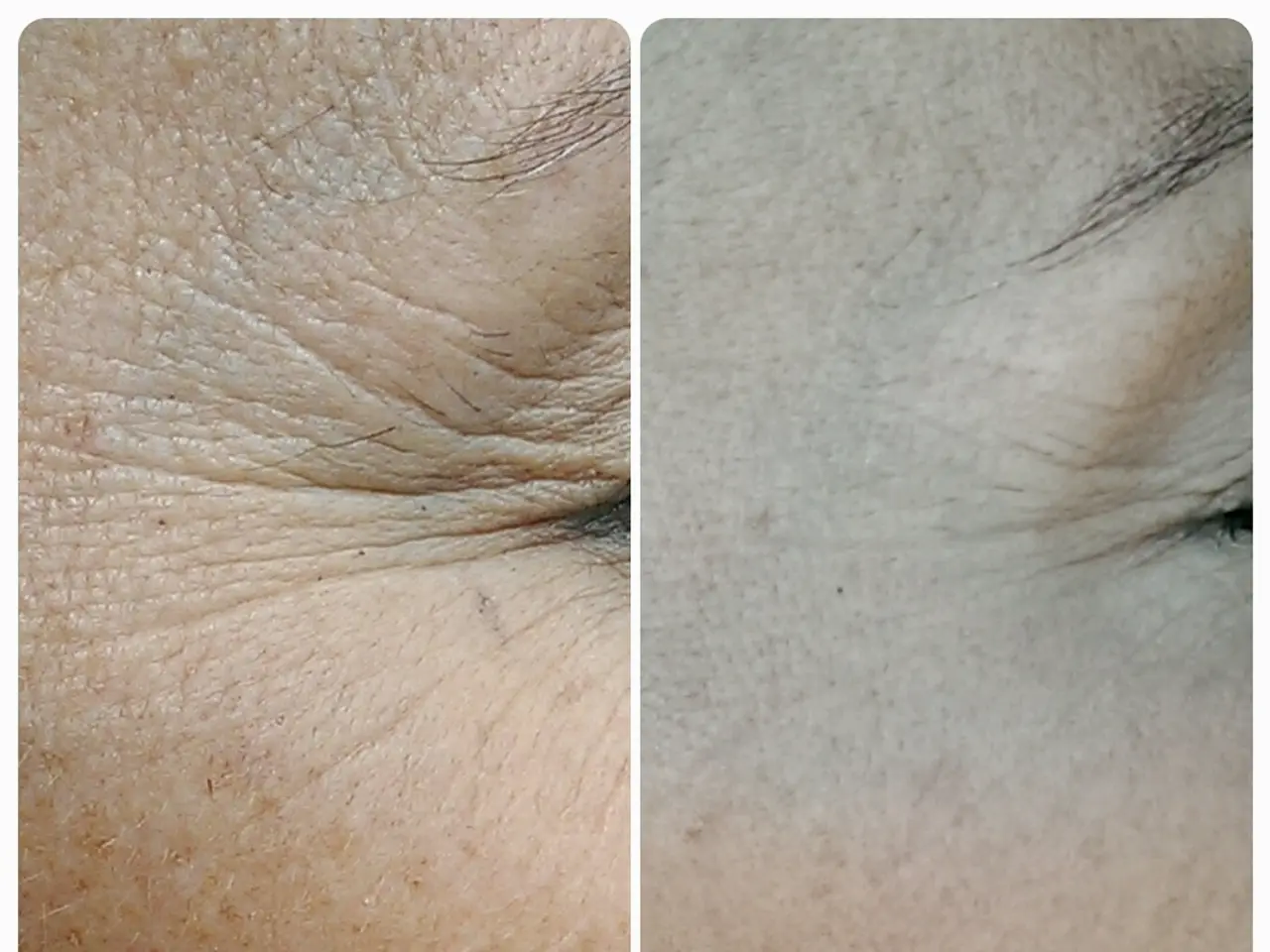Home Dermaplaning: Advantages, Drawbacks, Guidelines
In the world of skincare, dermaplaning, also known as dermablading, has gained popularity as a painless and effective method for removing dead skin and fine hair from the surface of the skin. This article aims to provide you with essential information on how to perform at-home dermaplaning safely and achieve optimal results.
Before embarking on your dermaplaning journey, it is crucial to understand the precautions and aftercare required to protect your skin from irritants and infection.
Protecting Your Skin
Avoid sun exposure for at least 24 to 48 hours, and use broad-spectrum SPF, a wide-brimmed hat, and sunglasses if you must be outdoors. Prolonged sun exposure can cause temporary redness or discoloration and increase the risk of skin damage.
Avoid hot water and high heat environments such as saunas because they can irritate and dry out sensitive skin and increase infection risk. Similarly, avoid chlorinated water, such as swimming pools, for at least three days since chlorine can further irritate and dry the skin.
After dermaplaning, do not apply makeup for 24 hours to allow the skin to "breathe" and heal properly. Avoid touching, rubbing, scratching, or picking the treated skin to prevent spreading bacteria and causing irritation or infection.
Avoid other facial treatments for at least two weeks to prevent irritation due to the skin's heightened sensitivity.
Using Proper Tools and Technique
To perform at-home dermaplaning, use sharp, clean blades designed for dermaplaning to avoid cuts, irritation, or ingrown hairs. Poor technique or dull tools can tug on skin and cause injury.
Training or knowledge about correct technique is important because improper dermaplaning at home risks cuts, irritation, and bacterial spread. Hold the dermatome at an angle of 45 degrees and gently draw the blade down the face, using short, small strokes.
Never dermaplane on skin that is irritated, broken, or has active acne to avoid worsening skin damage and infection risk.
Maintaining a Safe Dermaplaning Routine
Avoid dermaplaning more than once a week to protect your skin. Leave a week between exfoliating and dermaplaning to allow your skin to recover.
Dermaplaning can reduce facial scarring from acne or skin cell buildup from psoriasis. However, it is essential to remember that everyone's skin is unique, and results may vary.
In-office dermaplaning, performed by a trained professional with a sharper tool that exfoliates more deeply, may provide better results for those seeking a more intensive treatment.
With the right precautions, aftercare, and technique, at-home dermaplaning can be a safe and effective way to achieve smoother, brighter skin. Always remember to prioritise your skin's health and wellbeing.
[1] Mayo Clinic. (2021). Dermaplaning: A closer look at this skincare treatment. https://www.mayoclinic.org/tests-procedures/dermaplaning/about/pac-20385288
[2] American Academy of Dermatology. (2021). Dermaplaning: What You Need to Know. https://www.aad.org/public/diseases/a-z/dermaplaning-what-you-need-to-know
[3] Healthline. (2021). Dermaplaning: What Is It and Should You Try It? https://www.healthline.com/health/dermaplaning
[4] Byrdie. (2021). The Complete Guide to Dermaplaning at Home. https://www.byrdie.com/dermaplaning-at-home-3834630
[5] Paula's Choice. (2021). Dermaplaning: What It Is and How to Do It Safely at Home. https://www.paulaschoice.com/beauty-reference-library/treatments/exfoliation/dermaplaning/dermaplaning-what-it-is-and-how-to-do-it-safely-at-home.html
- To maintain optimal skin health during at-home dermaplaning, it's advisable to avoid sun exposure for 24 to 48 hours after the procedure, use broad-spectrum SPF, and limit outdoor activities.
- After dermaplaning, let the skin breathe and heal by refraining from applying makeup for 24 hours and avoiding touch, rubbing, scratching, or picking the treated skin to minimize bacterial spread and irritation.
- For the most effective and safe at-home dermaplaning results, always use sharp, clean blades designed for the procedure to avoid cuts, irritation, and ingrown hairs, and make sure to understand the correct technique before beginning the process.




